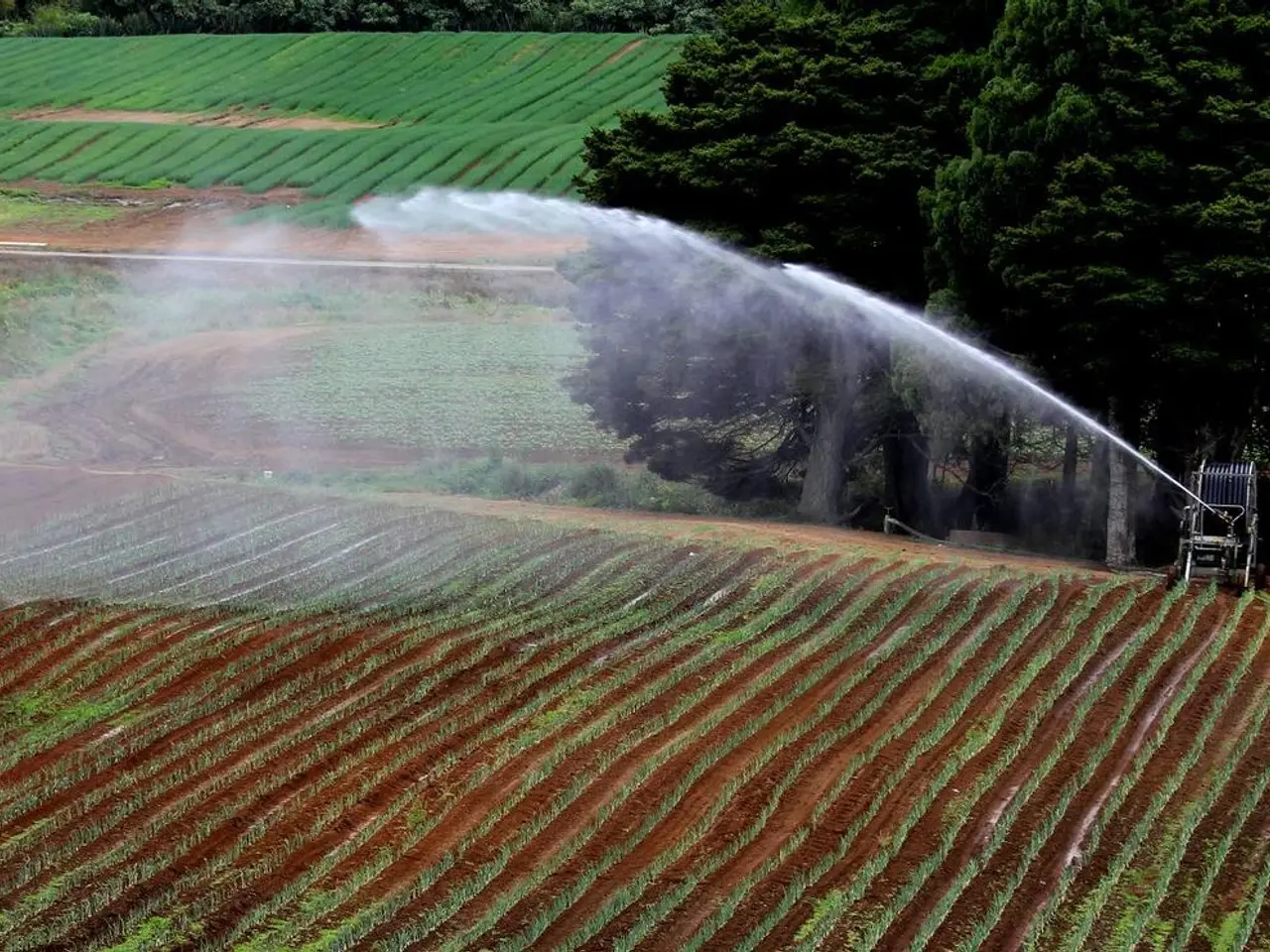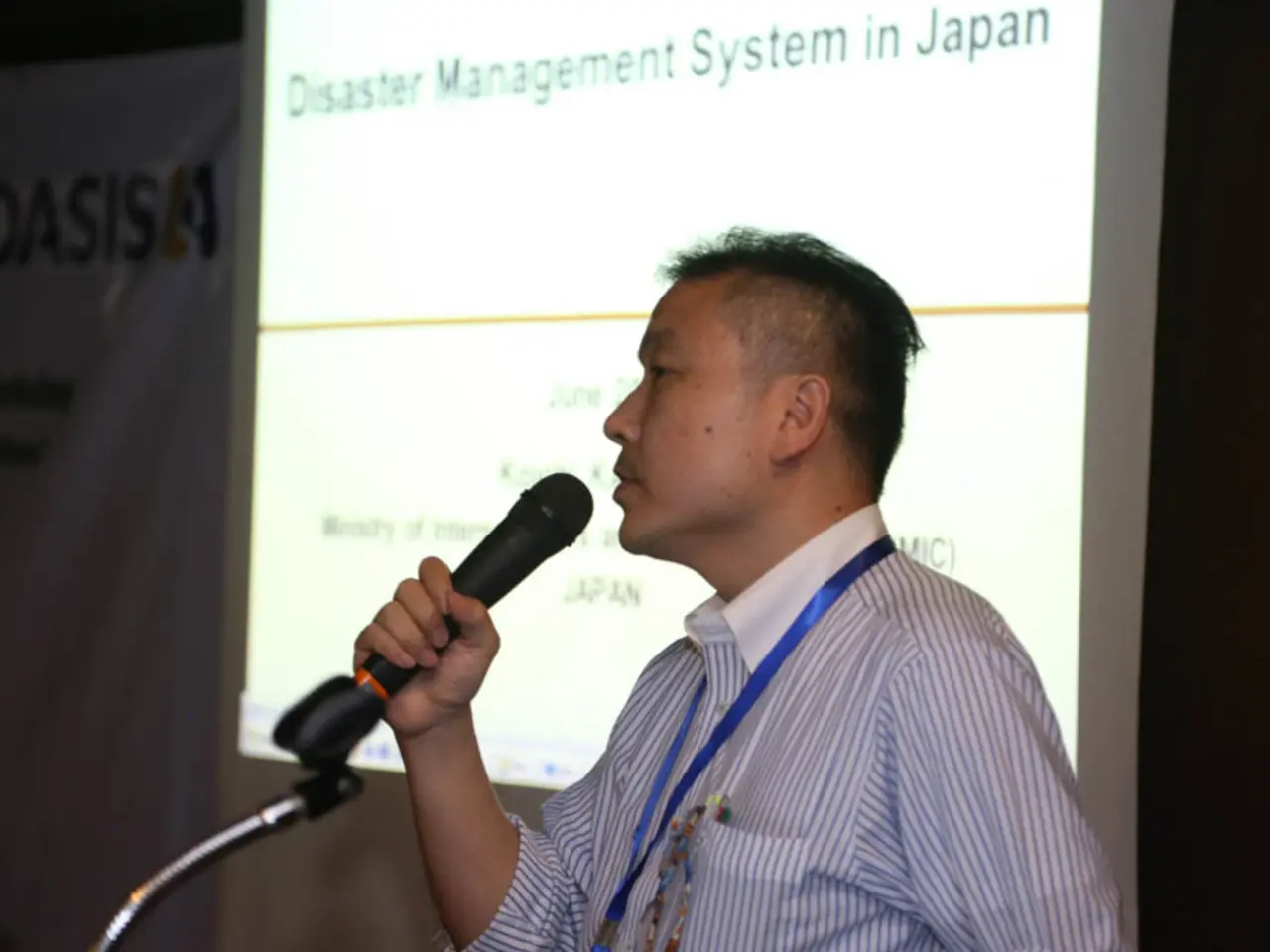Guidance on Lowering Excessive Water Table Levels
In the face of growing water scarcity and the need for sustainable farming practices, the focus on water conservation in agriculture has never been more important. Here's a look at key practices and benefits that contribute to sustainable water management in agriculture.
Essential Practices for Water Table Management
- Drainage Water Management: Regulating the water table through tile drainage systems helps prevent soil saturation and promotes aerated soil conditions essential for root growth and earthworm activity.
- Cover Cropping: Protecting soil from erosion, retaining moisture, and enhancing nutrient cycling are the benefits of cover crops. They also improve soil structure, allowing better infiltration and water retention.
- Reduced Tillage or No-Till Farming: Preserving soil organic matter and structure improves water infiltration, reduces runoff, and promotes earthworm populations that support root growth.
- Efficient Irrigation Methods: Drip irrigation and precision agriculture technologies deliver water directly to plant roots in optimal amounts, minimizing excess water application and reducing runoff and nutrient leaching.
- Buffer Zones and Vegetative Strips: Planted along water bodies, these help trap sediment, absorb excess nutrients from runoff, and reduce erosion, thereby protecting water quality.
- Local Groundwater Management and Water Allocation Strategies: Collaborative efforts among farmers to reduce water use and manage water resources sustainably over time.
Benefits of These Practices
- Crop Growth: Optimal water table conditions improve root aeration, promoting deeper and healthier root systems that access more water, especially in dry periods, leading to improved grain filling and yields. Efficient irrigation ensures crops receive adequate water without stress or waterlogging.
- Soil Health: Practices like no-till and cover crops enhance soil organic matter, improve soil structure, and increase earthworm populations that enhance nutrient cycling and root penetration. Proper drainage prevents soil saturation that can harm soil microbes and reduce soil fertility.
- Environmental Benefits: Controlling water table levels and runoff reduces nutrient leaching into nearby water bodies, protecting aquatic ecosystems from eutrophication. Buffer strips reduce sediment and chemical pollution. Sustainable water use reduces depletion of groundwater resources and helps maintain the long-term viability of agricultural landscapes.
In conclusion, these water table management practices contribute to sustainable agriculture by optimizing water use, preserving soil function, boosting crop productivity, and protecting the surrounding environment. The future of agriculture relies on the adoption of these practices and the continued development of new technologies to make water use more efficient and sustainable.
- Embracing no-till farming as a sustainable approach not only preserves soil organic matter and structure but also promotes earthworm populations that support root growth, improving soil health.
- The practice of cover cropping helps enhance nutrient cycling, retain soil moisture, and protect soil from erosion, contributing to the health-and-wellness of the environment.
- Buffer zones and vegetative strips planted along water bodies play a vital role in reducing erosion, trapping sediment, and absorbing excess nutrients from runoff, ensuring better water management.
- Adopting efficient irrigation methods like drip irrigation and precision agriculture technologies can help minimize excess water application, reduce runoff, and promote water conservation.
- Local communities can work together to develop groundwater management and water allocation strategies that aim to reduce water use, protect water resources, and ensure the long-term sustainability of agricultural lands.
- Sustainable water management practices can lead to improved crop growth, as optimal water table conditions and efficient irrigation methods help promote healthier root systems, deeper root penetration, and better nutrient uptake, contributing to climate-change mitigation through increased crop yields and environmental protection.




